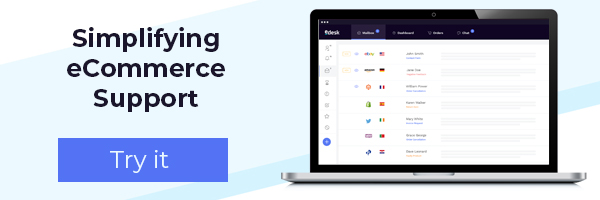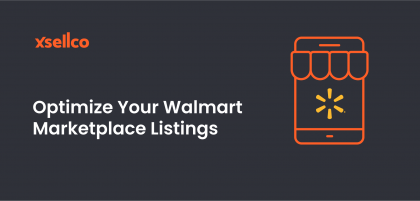Essential eCommerce Tools
As anyone who has established an eCommerce business will know, selling online can be complicated. Even the best sellers need extra support to leverage their business. This is where eCommerce tools for online sellers can help. Here are seven key areas where eCommerce tools can help you manage your business and improve your sales.
1 Shopping Cart
A cornerstone of any seller’s web store, the shopping cart needs to be a reliable, secure and seamless integration.
The software allows web stores to accept credit cards and other payments. Some shopping cart products on the market are open source, which means they can be tailored to suit the your needs.
Shopping cart software will also give your web store enhanced security and streamlined order management, helping to manage and protect your consumer data.
Shopping cart eCommerce tools range from free options like WooCommerce, to more advanced eCommerce solutions including Magento, Shopify, Squarespace and BigCommerce.
2 Customer Support
It’s never just about getting back to your customers on time. By replying quickly and consistently, you can turn queries into sales.
A customer support helpdesk can help you stay within marketplace response time SLAs. On Amazon, this means increasing your chance of winning the Buy Box.
Our customer support helpdesk, xSellco Fusion, centralizes customer support from marketplaces including Amazon and eBay, as well as web store tools BigCommerce, Shopify, Magento and more. With all customer queries in one place, you can speed up response times to beat marketplace SLAs and personalise the customer experience with Templates and SmartTags – turning your customer support operations into a well-oiled machine.
3 Shipping
Shipping can be one of the real pain points for sellers. In any business, the more moving parts you have (literally in this case), the more likely you’ll have problems.
Getting your products to the customer on time – and in one piece – can make or break your seller rating.
For Fulfilment by Merchant (FBM) sellers, it’s also crucial you don’t lose important information and that no process is forgotten en route to delivery. Shipping integrations allow you to optimize the order fulfilment process.
Some companies that offer inventory management, like BrightPearl and Veeqo, also offer shipping management tools. Other examples of shipping software solutions include Metapack, Shipworks, TrueShip and ShipStation.
Alternatively, if you use Fulfilment by Amazon (FBA), Amazon will handle the delivery process for you. This service is also available to non-Amazon sellers.
Related Blog: FBA vs FBM: should you opt for Amazon fulfillment services or use your own resources?
4 Inventory Management
Inventory management software allows you to manage your orders, products, customer information, accounts and reporting all in one system.
Having these areas centralized can save you a lot of time, and also help you streamline your whole stock management system. Make sure your inventory is well balanced across your marketplaces and, crucially, ensure you don’t continue selling products on one channel that you’ve already sold out in another.
Having these interlinked processes connected in one account can produce useful insights into where your business is winning – and where it needs improvement.
Inventory is a pretty crowded space, but some examples include (but are not limited to!) BrightPearl, Veeqo, StitchLabs, Contalog and Unleashed.
5 Feedback Solicitation
As few as one in ten customers leave feedback unless prompted. Asking your customers for feedback is a great way to improve your seller rating and increase sales. Every time someone gives you positive feedback, it increases the likelihood of a new customer buying from you.
Using a feedback solicitation tool means you ask for more feedback and at the right time. Automate feedback requests across multiple marketplaces and, crucially, increase positive feedback.
Our feedback solicitation tool xSellco High5 automates product review and seller feedback requests across multiple marketplaces. You can customize solicitation by product, shipping method, country and many more factors. Manage the timing of these messages to suit your strategy. The xSellco High5 dashboard provides you with an insightful, easy-to-use dashboard for monitoring feedback performance and seller rating. Try a free trial of xSellco High5.
6 Analytics
Accurate data is the driver of any business. Who are your web store customers? Where are they coming from? What brought them to your web store?
This is where analytics tools play a crucial role. Your metrics derived from these eCommerce tools will go a long way to forming, informing and justifying your business strategy. Knowing your sales is one thing, but knowing your customer is another. Knowing more about your customers’ behaviour, interests, location and browsing behaviour will inform everything from advertising to web design.
The industry standard happens also to be free – Google Analytics. It’s easy to implement and can be as good as you make it.
Other popular analytics tools may not be free but are generally quite affordable, such as the eCommerce-focused KISSmetrics , real-time analytics specialists Clicky and the visual-centric Crazyegg.
7 Repricing
How quickly do you react to competitor price changes? If you sell many products, it’s impossible to manually maintain your price competitiveness. xSellco Price Manager is an Amazon Repricer that maximizes your chances of winning the Buy Box and selling more products on Amazon.
Compete with rival sellers by setting the price range you’re happy with and choosing the rules for how you want to compete. Our repricer will do the rest. Got an eBay account? Our Price Replicator will automatically match your eBay prices to your Amazon prices.
Interested in learning more about our eCommerce tools? Visit our eCommerce Help Desk page or request a demo of our help desk tool.
Know any other Amazon tools that can help sellers? Tell us in the comments.









